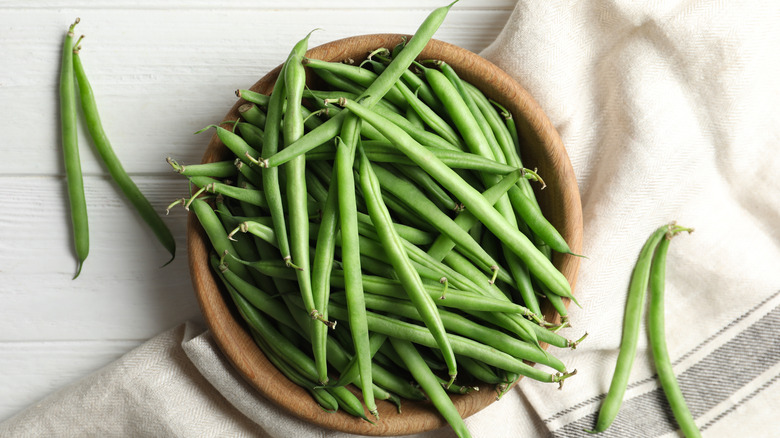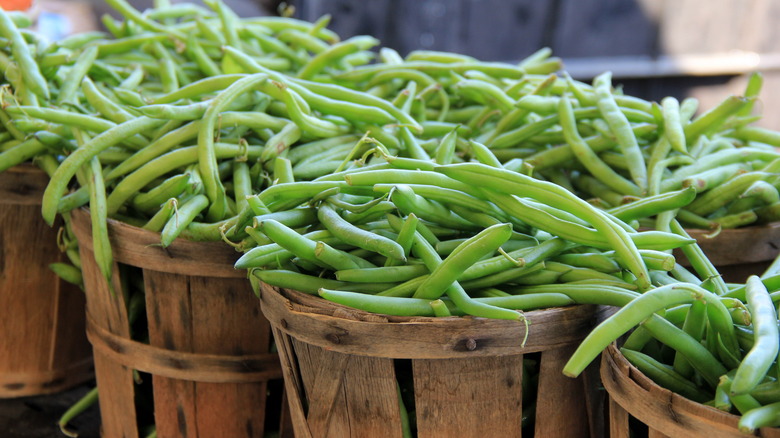Are Green Beans And String Beans The Same Thing?
Sitting under a shade tree, with a bowl in their lap and scrap bucket at their feet, generations have broken green beans together in the cool summer breeze. Communal in nature, this ritual came with perhaps Grandma reminding the youngsters to mind the beans' strings. Topping the bean with their little hands, they'd break off the branch end while also pulling off the string. That evening they might have eaten a batch fresh, or perhaps dried them into leather britches for winter's use.
While removing only the branch end is a North American technique, Online Culinary School notes that the French way of preparing green beans is to remove both ends. In any case, the school agrees with Grandma about removing the string that runs down the length of the bean. Still, with more than 10 common types of green beans (Phaseolus vulgaris) such as Blue Lake, Contender, and Kentucky Blue, MasterClass categorizes all green beans into two primary varieties: bush beans and pole beans, which are also known as runner beans. The green bean has come a long way over the years, with one notable difference affecting its preparation time. Whether you call them green beans or string beans, it's a mere question of breeding with no strings attached.
Green beans and string beans are the same
The string bean is one of America's oldest crops, documented with the Native North American companion planting known as Three Sisters: maize, winter squash, and climbing beans, according to the National Garden Bureau. Today, the green bean, string or stringless, is a warm-season crop harvested for its undeveloped seed pods, per the Center for Crop Diversification at the Universtiy of Kentucky. The center also notes that prior to the 1890s, all green beans had strings running along the pod's seam.
Calvin Keeney developed the very first green bean that didn't produce the fibrous string in 1894, according to SaveSeeds.org. The organization lists that the "Father of the Stringless Green Bean's" work garnered a larger following when W. Atlee Burpee Seed commercially released Keeney's baby as the Burpee Stringless Green Pod that year. Keeney would further his work with many other stringless varieties, eventually forming the Associated Seed Growers, Inc. (ASTA) in 1927.
To continue the tradition of generations past, some heirloom varieties of string beans remain, such as the Cherokee Black, carried by the late Dr. John Wyche's Cherokee ancestors over the Trail of Tears (it can be found on Seed Savers.org). Regardless of the string status, however, all varieties are considered green beans.

